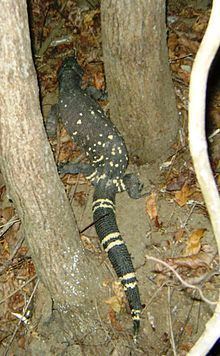Genus Heloderma Rank Subspecies | Phylum Chordata Family Helodermatidae Higher classification Beaded lizard | |
 | ||
Scientific name Heloderma horridum charlesbogerti Similar Heloderma, Reptile, Gila Monsters, Scaled reptiles, Ctenosaura palearis | ||
The Guatemalan beaded lizard (Heloderma charlesbogerti), also called the Motagua Valley beaded lizard, is a highly endangered species of beaded lizard, a venomous lizard endemic to the dry forests of the Motagua Valley in southeastern Guatemala, an ecoregion known as the Motagua Valley thornscrub. It is the only allopatric species, separated from the nearest population of beaded lizards (H. alvarezi) by 250 km of unsuitable habitat. The Guatemalan beaded lizard is the rarest and most endangered species of beaded lizard and it is believed that fewer than 200 of these animals exist in the wild, making it one of the most endangered lizards in the world. In 2007, it was transferred from Appendix II to Appendix I of CITES due to its critical conservation status.
Contents
Taxonomy
The Guatemalan beaded lizard belongs to the family Helodermatidae which forms part of a clade of reptiles with toxin secreting glands. Apart from being the only allopatric population of Heloderma horridum this species differs from other species in coloration and size, being the smallest one. Home ranges and behavior of these lizards were investigated using radio-telemetry at the dry forests of Zacapa, Guatemala. The average home range for individuals was found to be 130 ha.
This species was first discovered in 1984 by an agricultural laborer named D. Vasquez in Guatemala's Motagua Valley. Its generic name Heloderma means "studded skin", from the Ancient Greek words hêlos (ηλος)—the head of a nail or stud—and derma (δερμα), meaning skin. Its specific name is after US herpetologist Charles Mitchill Bogert.
Diet
H. charlesbogerti dwells in arroyos characterized by high densities of bird nests of doves and parakeets, whose eggs form the primary component of its diet. These birds nest closer to the ground in these arroyos in trees with branches thick enough to support the weight of this heavy-bodied lizard. It is known to prey upon insects, such as beetles and crickets. The eggs of the Guatemalan Spiny-tailed Iguana (Ctenosaura palearis), an endangered species endemic to the same region, are an important food source for the Guatemalan beaded lizard, thereby possibly linking the status of the two.
